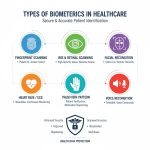Global Hepatitis C Drug Market
As stated in our extensive report, the Global Hepatitis C Drug Market accounted for USD 21.9 Billion in 2022 and is projected to reach a value of USD 56.5 Billion by 2030.
The Hepatitis C Drug industry is expanding due to rising awareness, available treatment improvements, and easier drug access. These elements have helped to increase the number of people seeking treatment, the success of that treatment, and the demand for Hepatitis C Drug. More people seek diagnosis and treatment due to more excellent knowledge of hepatitis C and Hepatitis C Drug. Information regarding the illness, its transmission, and the value of early detection and treatment has been disseminated through awareness campaigns and educational initiatives. As a result, more people are receiving a hepatitis C diagnosis, increasing the need for Hepatitis C Drug and fueling the market’s growth.
The efficacy of hepatitis C therapy has increased due to developments in medical research and the creation of new medications. Compared to more traditional treatment regimens, direct-acting antivirals (DAAs) now offer higher cure rates and shorter treatment times. The success rates of therapy have grown thanks to these novel pharmaceuticals, which have increased demand and expanded the market. The development of the industry has been influenced by initiatives to increase access to Hepatitis C Drug. Reducing the price of therapy and expanding availability has been the goal of access initiatives, pricing discussions, and partnerships between pharmaceutical corporations, governments, and nonprofit organizations. The market has grown to reach a more significant population needing treatment by making Hepatitis C Drug more accessible and inexpensive to various patients.
Click To Get a Free Sample On the Research Study

Key factors influencing Hepatitis C Drug Market Growth
The growth of the global Hepatitis C Drug market can be attributable to the following:
- Hepatitis C Prevalence: Hepatitis C prevalence is rising and is a significant market growth driver. Hepatitis C is a viral infection that affects the liver, and it can be spread through high-risk sexual behavior, blood transfusions, and improper injection techniques. Hepatitis C infection rates are rising, which increases the need for efficient treatments and propels market expansion.
- Revolution of Treatment Options: Direct-acting antivirals (DAAs) have completely changed how hepatitis C is treated. DAAs have excellent cure rates and shorter treatment times compared to more traditional treatment plans. The demand for Hepatitis C Drug has increased, which has boosted market growth. More effective and tolerable treatment choices are now available.
- Increased Awareness and Screening Initiatives: There has been an increase in screening initiatives due to greater public awareness of hepatitis C, its transmission routes, and the value of early detection and treatment. Increased availability of testing facilities, educational initiatives, and public health campaigns have all contributed to excellent diagnosis rates. The need for efficient therapies increases as more people are given hepatitis C diagnoses, fueling market expansion.
- Government Support and Initiatives: Governments and healthcare providers worldwide have taken proactive steps to fight the hepatitis C epidemic. They have launched awareness campaigns, treatment protocols, and screening programs. Initiatives to lower the cost of therapy and increase access to cheap pharmaceuticals have also helped the market expand.
- Research and Technological Advances: The hepatitis C market has grown significantly due to technological advancements and continuous hepatitis C research. Treatment choices have increased, and patient outcomes have improved due to identifying new therapeutic targets, creating innovative medications, and enhancing diagnostic techniques. Continuous investment in R&D promotes innovation, which fosters market expansion.
North America Region to Lead the Market
North America Hepatitis C Drug market is getting more notable, with the highest market sales during the projected period. The region’s dominant position in the market is largely due to its developed healthcare infrastructure, high levels of Hepatitis C awareness, and benevolent reimbursement policies. Hepatitis C affects a sizable patient population, particularly in the United States, which has increased the need for efficient treatments. Due to this demand, pharmaceutical businesses are concentrating on research and development to develop novel therapies and release new goods on the market. The expansion of the industry has been significantly aided by the availability of effective direct-acting antivirals (DAAs) in North America. With better cure rates and shorter treatment times, these highly effective drugs have entirely changed the therapy landscape.
Patients can quickly get Hepatitis C Drug due to the region’s established pharmaceutical companies and strong distribution networks. These elements and continuous initiatives to improve diagnostic and treatment procedures and promote public awareness have catapulted North America to the top of the market for Hepatitis C Drug in revenue creation. The top spot for revenue contribution in North America shows the region’s significant contribution to the evolution of Hepatitis C Drug. The area has become a significant player in the global market thanks to its robust healthcare system, rising demand for efficient treatments, and accessibility to cutting-edge medications. North America is anticipated to maintain its dominance and contribute to the continuous expansion of the Hepatitis C market as research and development continue to advance.
Conclusion
The global Hepatitis C Drug market is experiencing substantial growth driven by increased awareness, innovation in treatment options, and improved accessibility. The market is witnessing a surge in demand as awareness campaigns and educational initiatives lead to more people seeking diagnosis and treatment. Developing new and more effective medications, particularly direct-acting antivirals (DAAs), has revolutionized the treatment landscape and improved patient outcomes. Efforts to address the high cost of Hepatitis C Drugs and government support in implementing screening programs and treatment protocols have further propelled market expansion. With leading in revenue contribution and ongoing research and technological advancements, the Hepatitis C Drug market is poised for continued growth in the foreseeable future.
The well-known players of the Global Hepatitis C Drug Market include AbbVie Inc., Gilead Sciences Inc., Bristol-Myers Squibb Company, Janssen Pharmaceuticals Inc., Merck Sharp & Dohme Corp and others.
![[Market Research Reports] – Research Google News Blog | VMR.Biz](https://www.vmr.biz/wp-content/uploads/2022/12/logo-removebg-preview.png)











